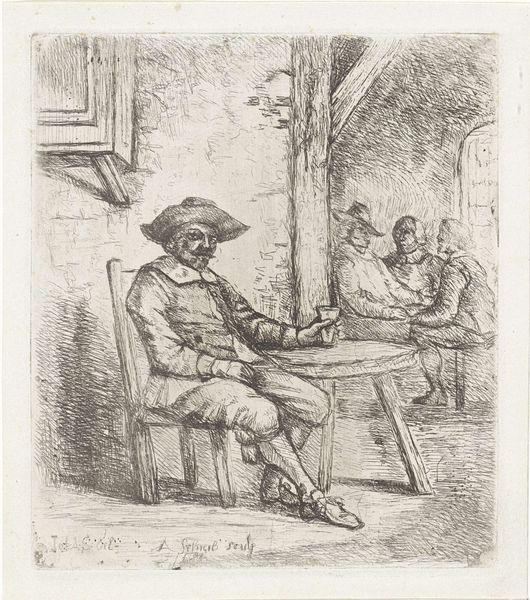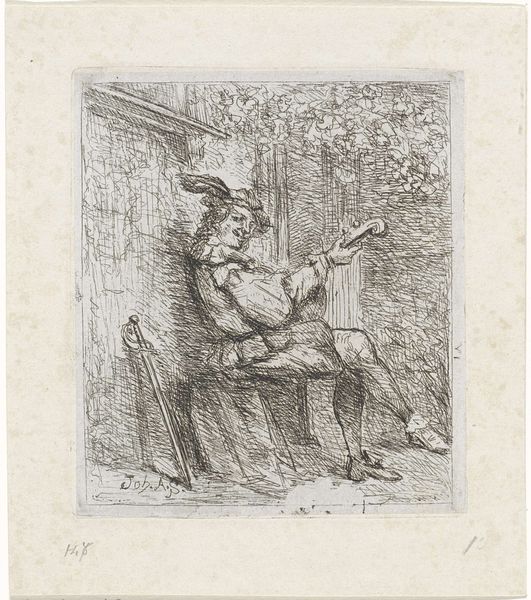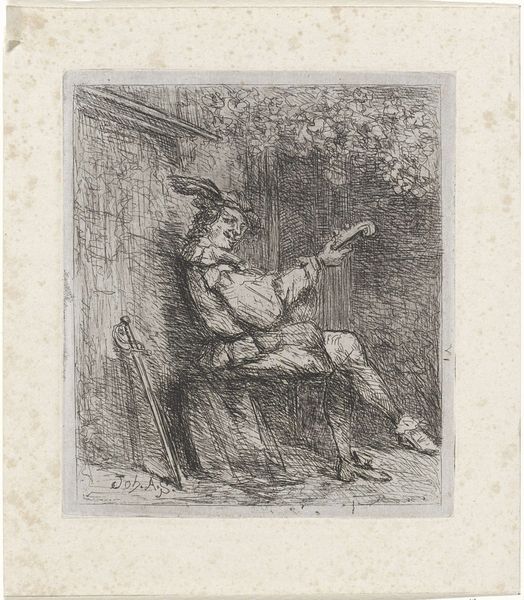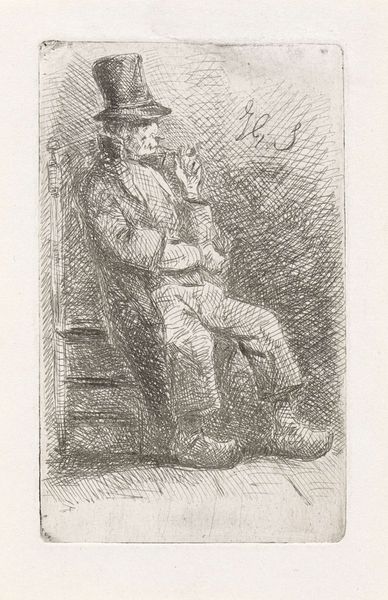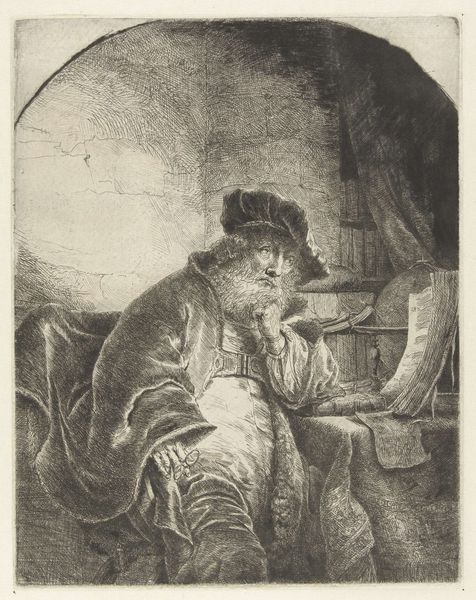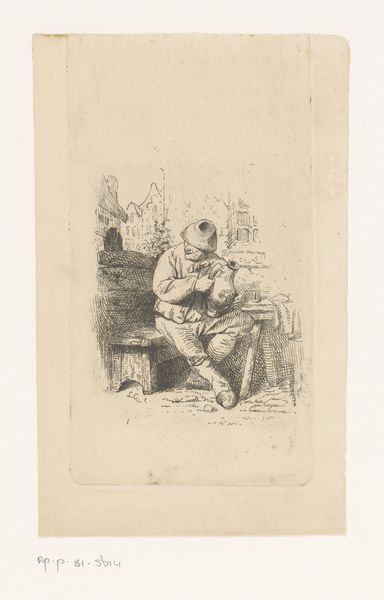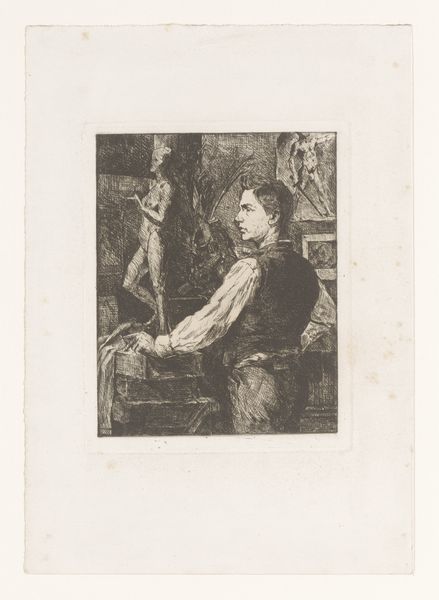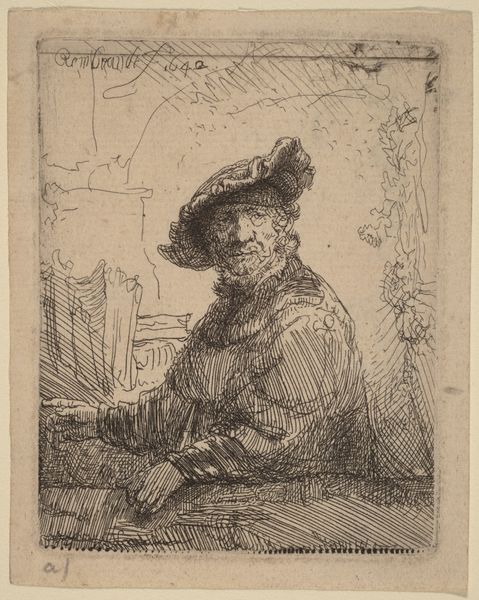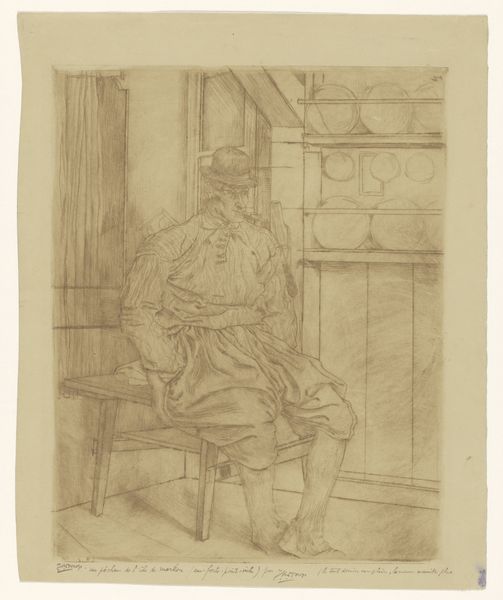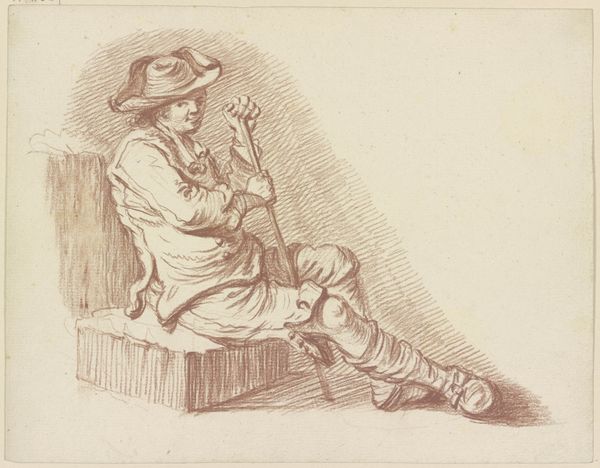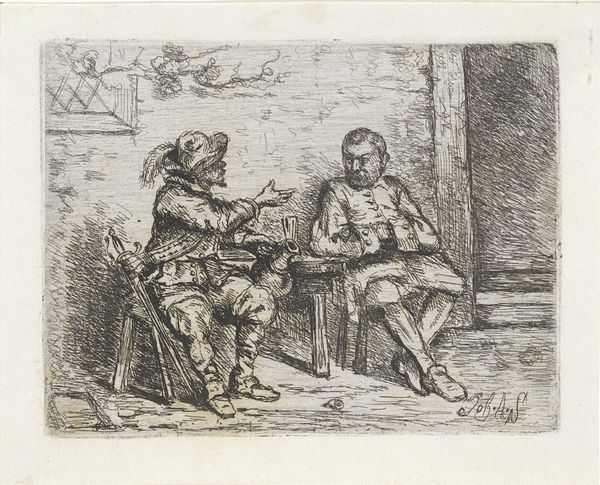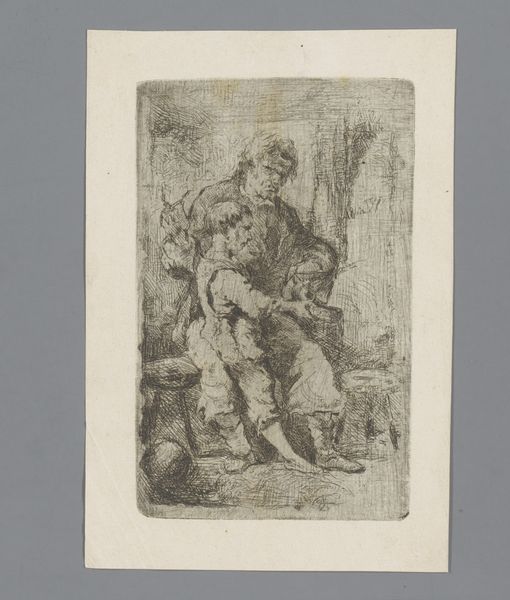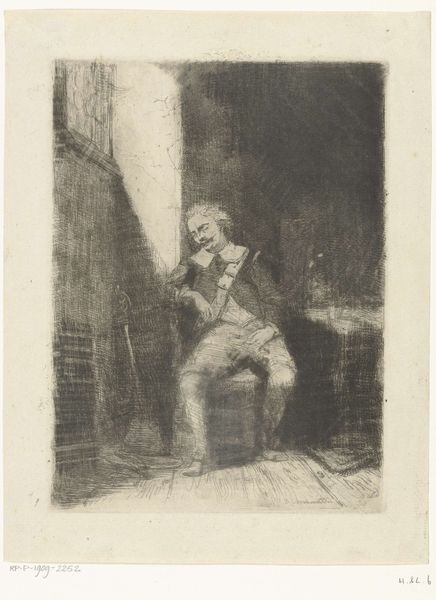
drawing, print, etching, ink, engraving
#
portrait
#
drawing
#
ink drawing
# print
#
etching
#
ink
#
genre-painting
#
engraving
Dimensions: height 148 mm, width 128 mm
Copyright: Rijks Museum: Open Domain
Curator: Welcome. Before us is “Herberg,” a genre scene etching produced sometime between 1830 and 1863 by A. Schaub, rendered with ink. It is a wonderful testament to the social habits of its time, brought to life through delicate line work. Editor: I'm struck by how the cross-hatching evokes a certain… griminess. It feels dark, as though light itself struggles to penetrate this scene, hinting at perhaps something less than convivial beneath the surface. Curator: Interesting observation. As an etching, the method of production here—scratching into a metal plate—immediately lends itself to capturing minute detail and a slightly roughened, handmade texture. The ink emphasizes the process itself, underlining the manual labor embedded within art production. Consider the artist's labor versus that of the innkeeper and the customers. Editor: Right, the manual aspect versus the commerce it depicts. Yet beyond the materiality, don't you find the placement of figures suggestive? Our main character is front and center, and bathed in light, glass in hand, alone yet seemingly observed by the crowd of shadowy figures in the background. There's a sense of being scrutinized, almost judged. Is that glass a chalice? Is it simply a glass of wine? That shift of symbolism opens a multitude of meanings to me. Curator: It also speaks to class distinctions of the period and the artist's gaze. The detailed portrayal of attire emphasizes material status: the main figure is a man of some leisure who can consume a drink in this "herberg", where the other more shadowy individuals seem not to have any interaction with him, and they may reflect laborers on their way to a shift or after an exploitative shift. Editor: Absolutely! It acts as a cultural touchstone of status and consumption. Also consider the overall atmosphere—is it a depiction of merriment or a cautionary tale about excessive consumption? Is there an allegory hidden in the depths of the Tavern’s ambiance? What underlying moral message could the artist have intended? Curator: Perhaps both, mirroring society's complex view of labor and leisure. It underscores a recurring societal concern with wealth distribution and work’s role in attaining pleasure versus the dangers of indulgence and detachment from it. It makes us aware of a potential narrative intended to illustrate and to challenge. Editor: And that is why “Herberg” endures beyond its age. Thank you for unpacking the layers. I am walking away pondering more now the complexities of representation within it. Curator: Agreed! It reveals a small picture of larger, historical tensions.
Comments
No comments
Be the first to comment and join the conversation on the ultimate creative platform.
